Exploring on foot, and photography at Victoria Peak
Dawn
Sam awoke at some awful early hour of the morning to find the sunlight catching the skyscrapers beautifully, I stayed in bed while she zipped about the hotel trying to find the best vantage point, one that wouldn’t be through some grubby hotel windows; the executive rooftop lounge worked.
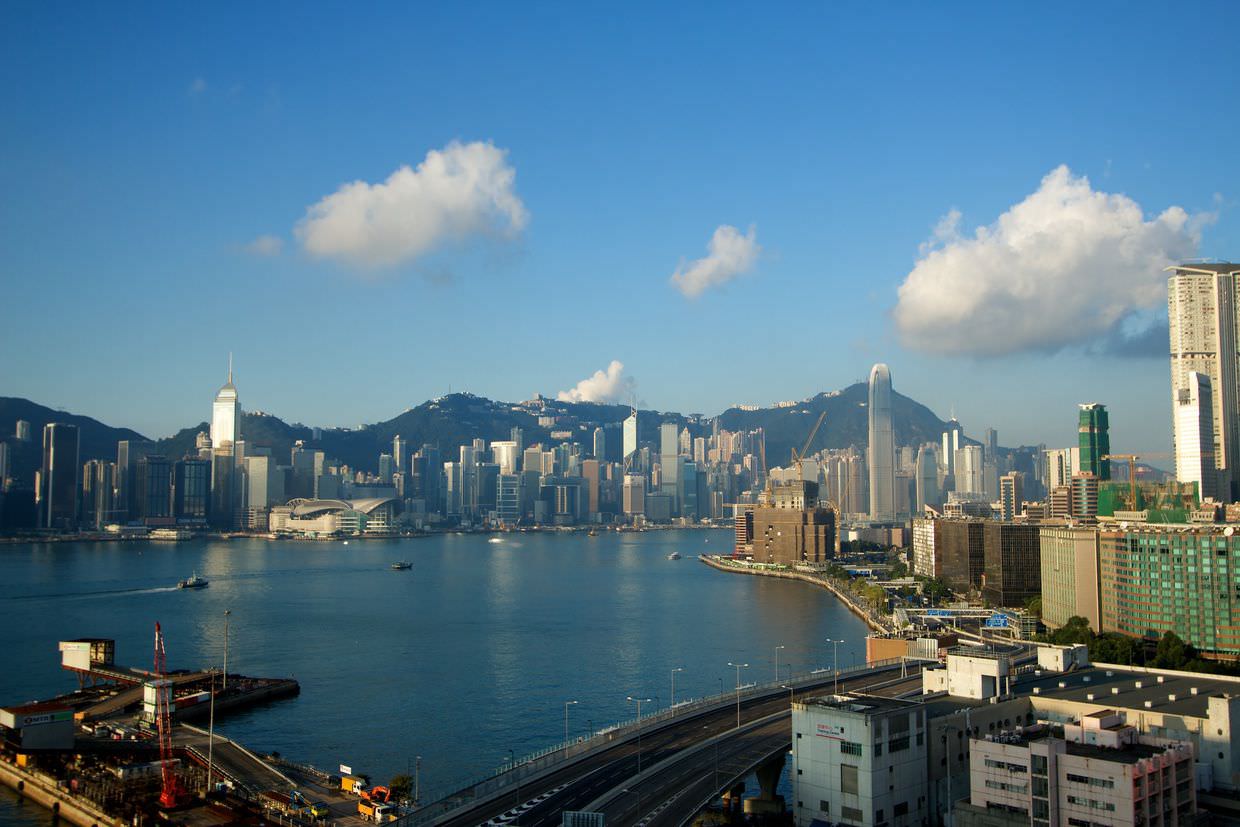
Half-day relaxing
Despite having just a single full day in Hong Kong to explore the city’s offerings, we really didn’t want to do too much, and we needed a bit of rest and recuperation before the long journey back to the UK. At 9am we exchanged our farewells with Roger and Mieke (amongst talking about tips when photographing the aurora borealis) and headed down to an indulgent buffet breakfast. By 11am the temperatures were touching 30C, and it felt like a good time to use the outdoor pool and jacuzzi. After carrying our ‘swimmies’ all around China it felt good to finally use them.
Half-day exploring
We had only one aim for the day, which was to cross over to Hong Kong island and checkout Victoria Peak at sundown — and to take pictures, of course. We begun on the Avenue of Stars, and crossed over to Central on the easy star ferry, only 10HKD each (£1). From the ferry we meandered south, along the covered walkways which bypass the busy roads below. At the Apple store hordes were queuing for the iPhone 6, and we passed people in the overpass with boxes of them, presumably to sell on at a profit. Quite by mistake we found ourselves stuck inside an Armani mall; Armani suits, shoes, children’s clothes, even flowers. Stuck in this hellish luxury labyrinth, we desperately asked at the help desk for a way out.
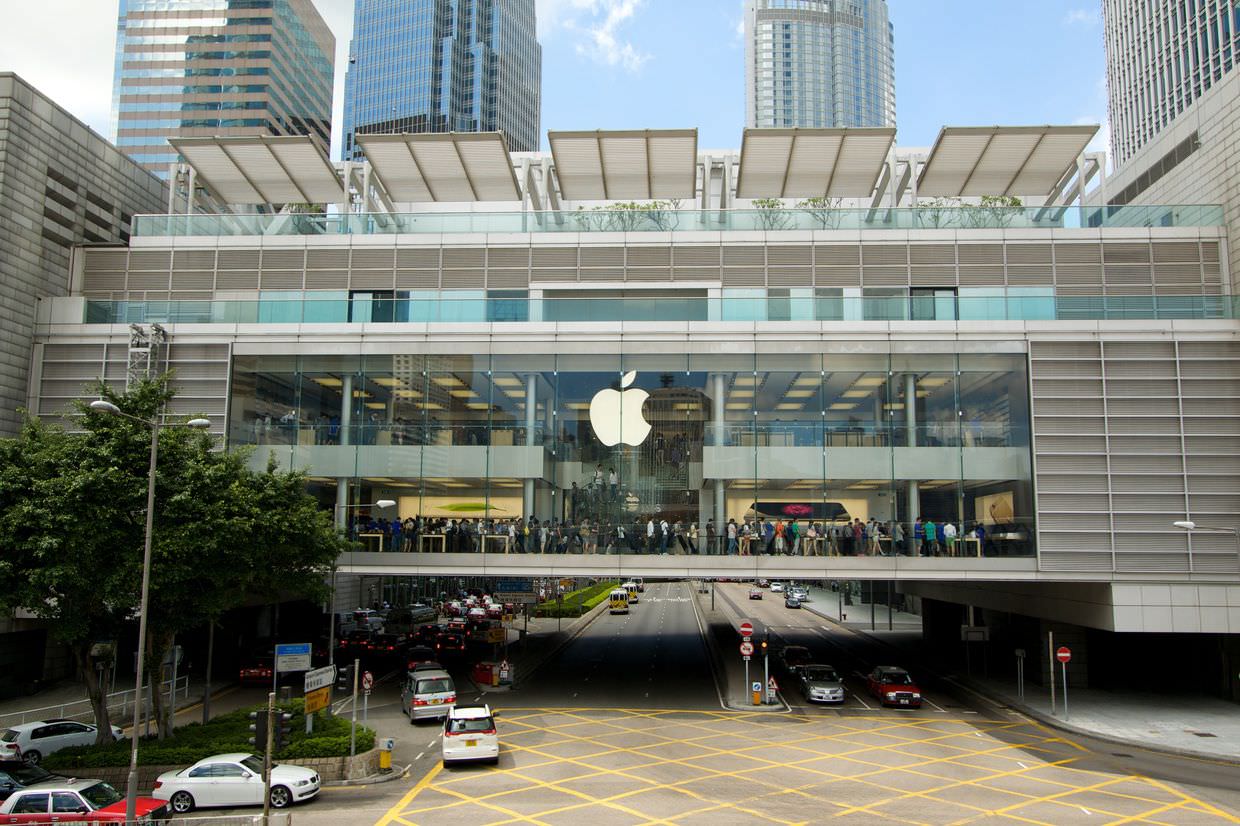

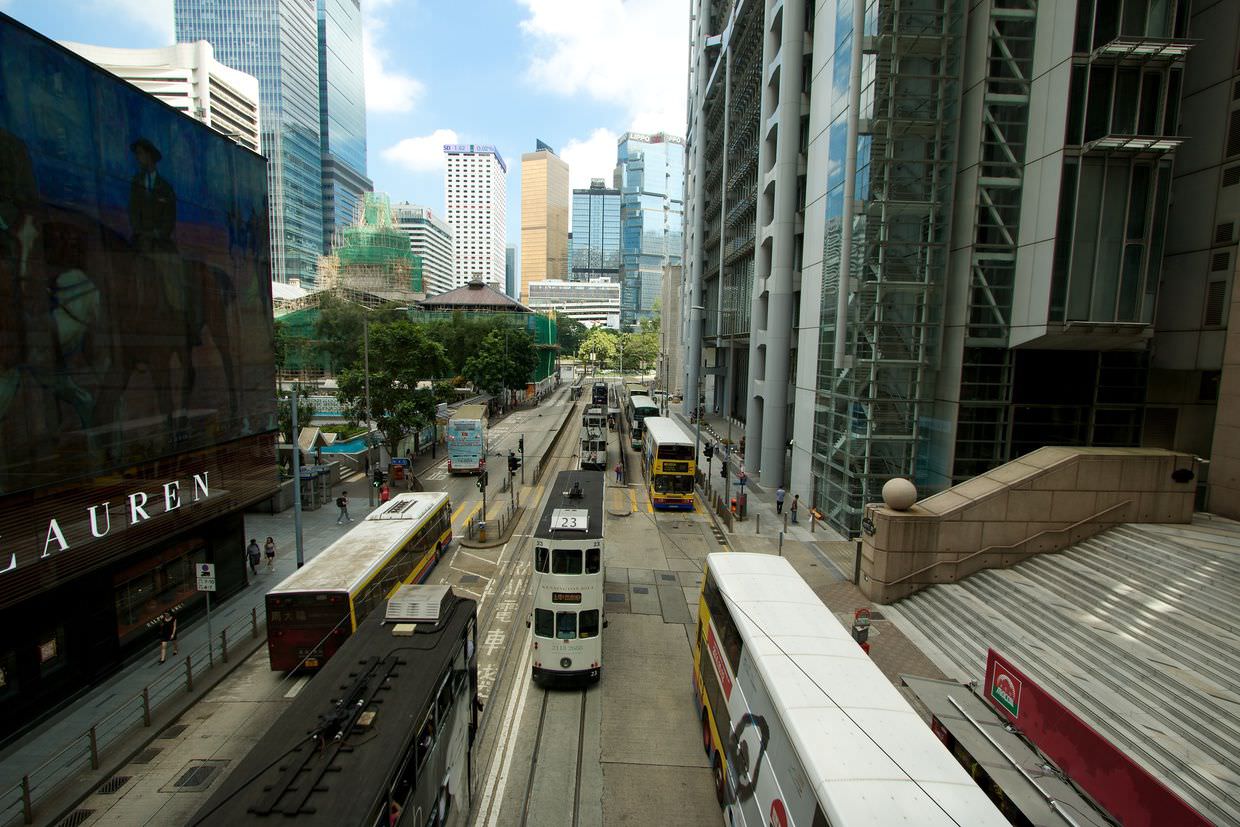
The Lonely Planet guide recommended Norman Foster’s HSBC building, but on a weekend it shuts at midday and its innards were being renovated for HSBC’s 150th anniversary. We gawked at the outside and continued up the hill towards the peak tram station where we stopped at Pacific Coffee for ice cold (brain-freeze) passion fruit and mocha espresso drinks. Far too early to go up to the peak, we explored the nearby Hong Kong park and its perfect ponds, and the small Flagstaff House museum of tea-ware (which inevitably brought up the same old arguments about whether we should be buying an ornate Chinese tea set). For lunch we found The Petit Café, a perfect takeaway delicatessen with wholesome salads, brie panini and homemade quiche; something we’d never have discovered without Foursquare and free roaming.
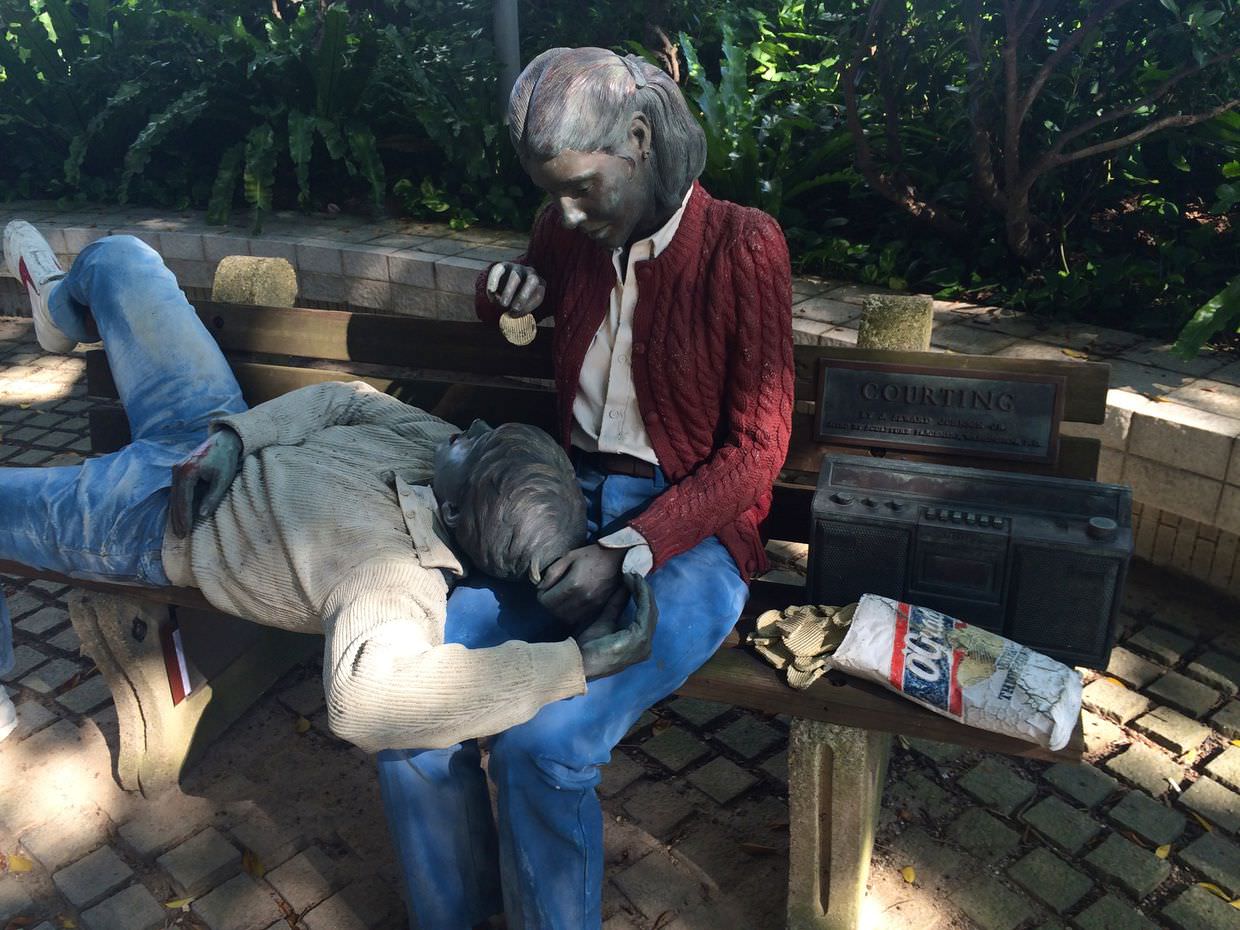
Victoria peak
Food in bag, we returned to the peak tram station to discover queues — these weren’t here before! It was a saturday evening with gorgeous weather. We queued, and mistakenly bought the more expensive return tickets (cash only) which included the “Sky Terrace 428”, a crowded viewing platform above the tram station. The crowds were crammed in, and in a tight space we waited for half an hour to get the old tram up the hill. It was at least comforting to be part of a civil organised queue with little barging and fighting to board the tram fastest, unlike the buses in Jiuzhaigou. The funicular railway may sound romantic, but it’s a steep renovated tourist attraction selling key rings and once you board it takes only 10 minutes.
Hong Kong is all about shopping, and this peak park area is no exception, at the top of the hill sits a three storey shopping mall with Starbucks, restaurants and, in September, a whole Halloween themed fright-fest. Even the tram station is filled with clothes stores and kitsch. Escalators take everyone up and out to the viewing platform, the exit hidden at the back of one of the levels. The views from this part of the hill aren’t the best, and we left to find a better, quieter place to take photos and eat our lunch.
An old tram near the station has free maps of the area, showing all the walks — where to go for viewpoints and how to walk down if you wanted to. We headed west along the quiet and lovely Lugard trail (盧吉道), a circular route 400m above sea level offering fabulous panoramic views over Victoria harbour. It’s a road, sort of, too narrow for cars but some vehicles have permits to use it; but that means there’s no benches to perch on, so we sat on the concrete floor to eat our lunch (though by now it was dinner time), with views out between the railings of the International Commerce Centre and One Island East. We were joined by a puffy out of breath poodle, panting and splayed out on the floor to cool down (until we opened the salami).
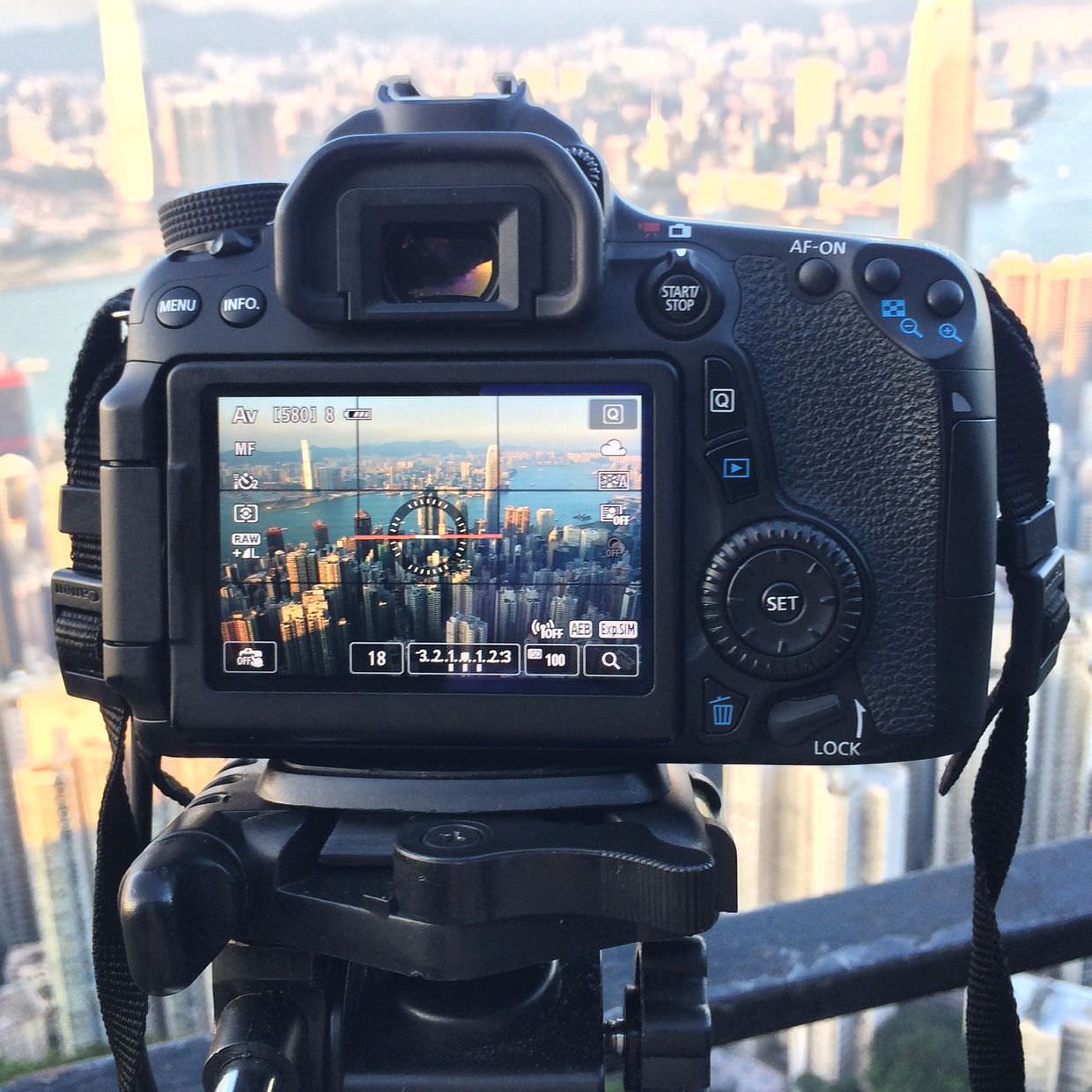
The plan was for both of us to take pictures from the peak, walkabout lens on the full size tripod and the wide angle on the gorilla pod. But the lens swap was a bit of a disaster, somehow managing to get fluff on the walkabout and on the 500D’s sensor. For a short stressful moment we thought both cameras had sensors too dirty to use. While the sun set I snapped away, exposures growing longer, skies darkening. A peculiar and inexplicable channel appeared between the clouds above the city.
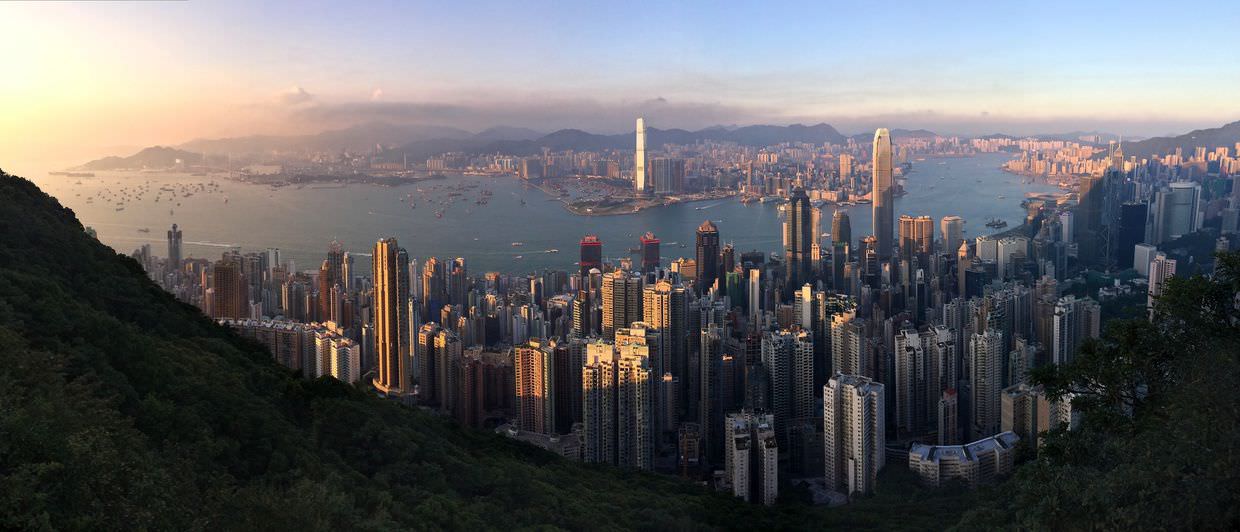
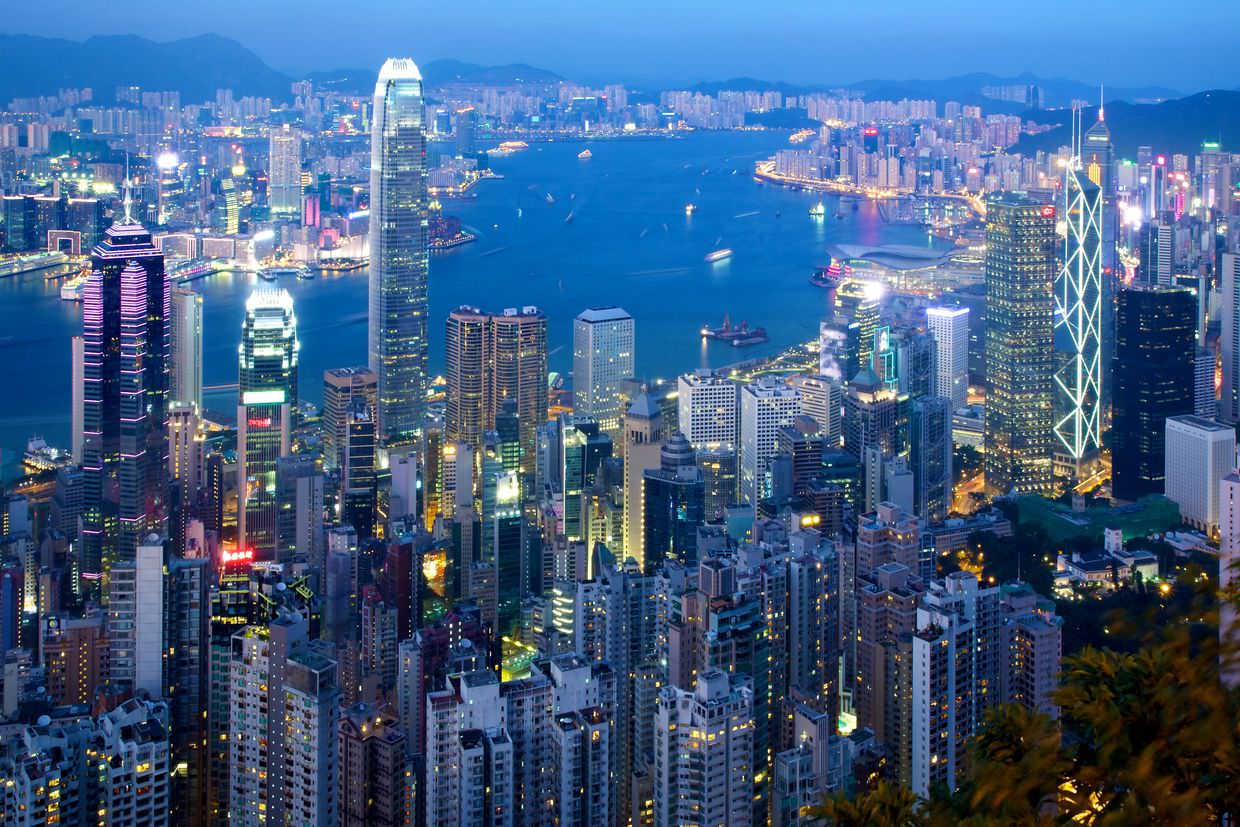
Meanwhile Sam resigned herself to not taking pictures, but made sure I’d photograph the composition she wanted. She explored Lugard road and, as Sam is quite excellent at, made friends with other people on the peak, this time a German couple who were both professional photographers, they were trying out Sony’s new mirror-less camera (“it’s a new toy”). The nighttime cityscapes were interrupted by wildlife, an inquisitive hand-sized praying mantis made an appearance which we all tried to photograph, and then we headed home.
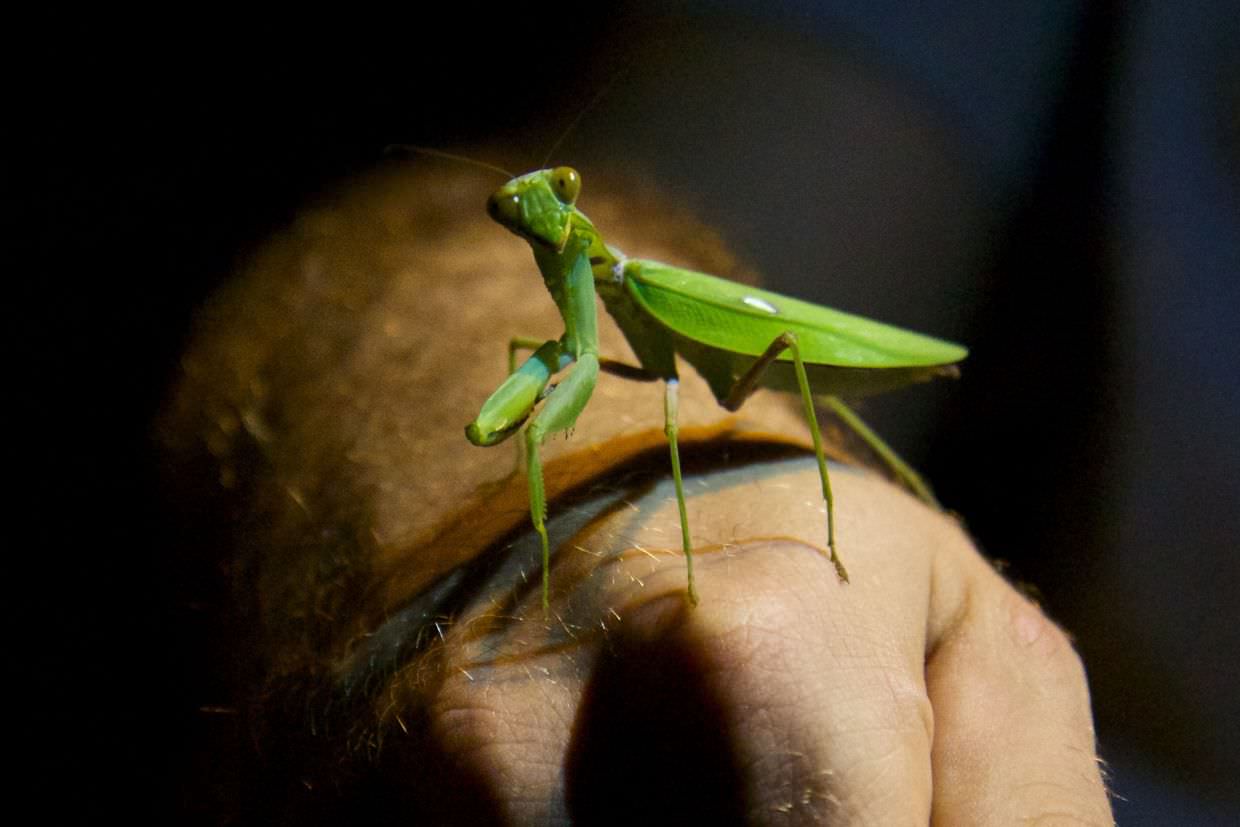
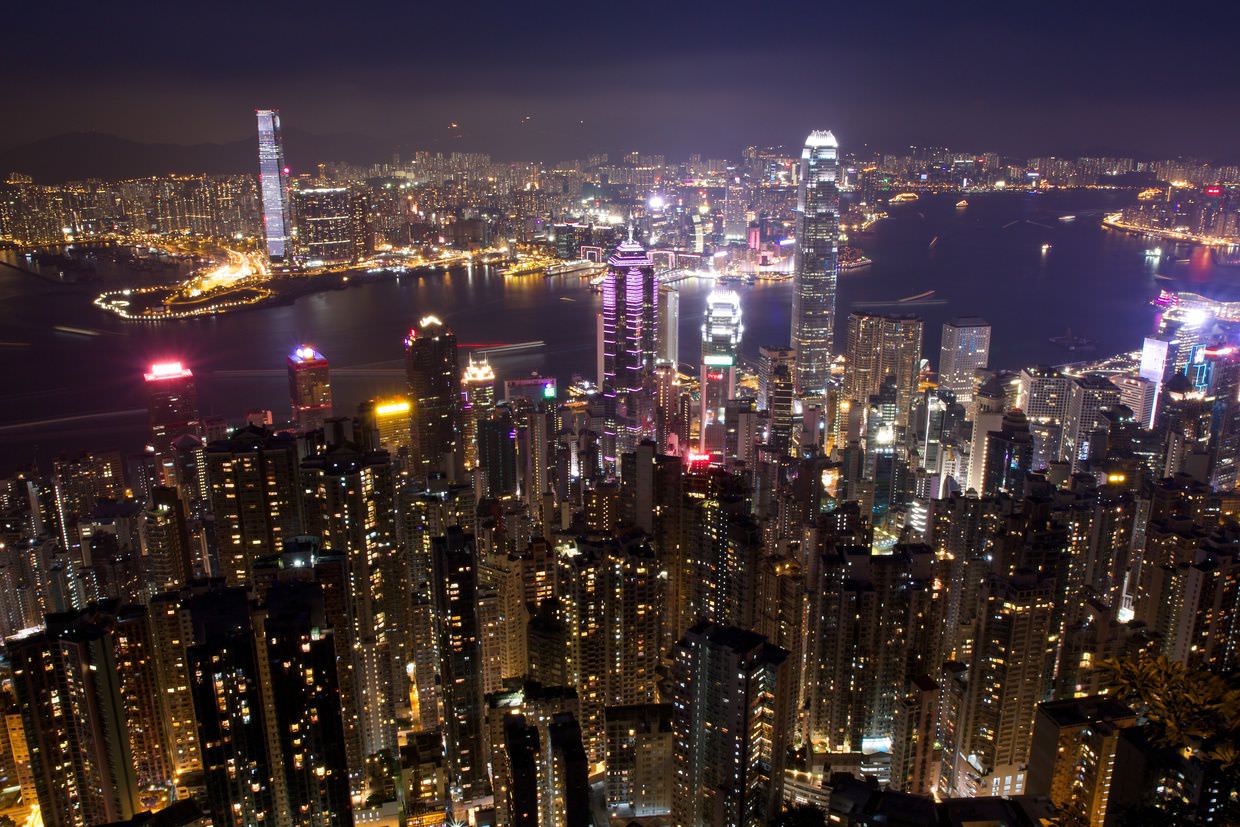
At the tram station there were insane queues of 90mins to get down the hill, and taxis were charging a ludicrous 300HKD (£30) for a 10 minute drive. We found an English couple, both medics travelling before they emigrate to New Zealand, and considered sharing a taxi; instead we all took the quiet and scenic (but now quite dark) path down the hill, using the 40 min walk as an opportunity to chat about our travels. Amidst a conversation about Vietnam’s “best bits” came sudden shrieks of terror, a porcupine, about the size of a small dog, that was merrily minding its own business was suddenly startled by us and it got a bit defensive; the rodent with its back to us raised all its quill-like spikes and shook its rattlesnake tail — which then startled most of us. None of us had seen a porcupine before but we soon left it to calm down in the dark by itself. The hill is steep but we soon arrived back in Central, the clock was approaching 10pm, our stomachs were missing out on dinner. We said goodbye to our Victoria peak companions and headed back to the hotel.
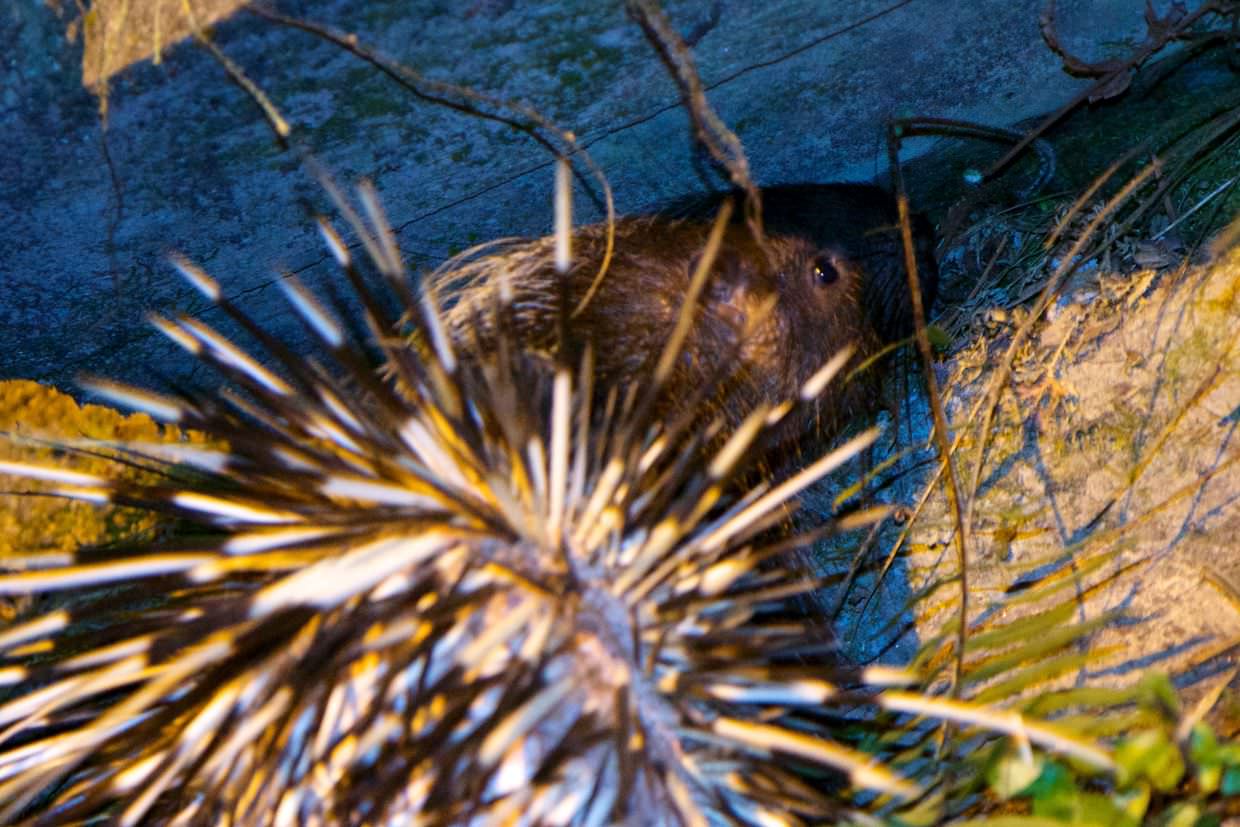
On the Star ferry back we chatted to some regular visitors about how Hong Kong has changed in the last 10 years; “more and more mandarin is being spoken in the city” they said, ads are in Chinese — before it, “was all English”; more Chinese are visiting Hong Kong — “for luxury shopping and healthcare”, (women visiting from China may need a ‘routine’ pregnancy test, a Hong Kong passport is a desired thing), “there are more road accidents too”. Chinese nationals have a quota which limits how often they can come to Hong Kong we were told, the quota is higher for residents of Shenzhen and Guangzhou. Thankful for our British passports we disembarked, bought ice cream with the last of our HKD and walked back to Harbour Plaza.
Goodbye Hong Kong, Goodbye China
And that was the end of our epic three week journey around China. At 4am we took a taxi to Hong Kong airport and boarded an Emirates flight back to Dubai, and then on to Brighton (where the trains were playing up and we had to get a coach) — 26 hours door to door.
China is an exhausting but incredible country to explore, with sublime natural wonders, of which we’ve only touched the surface, and crazy cities that are both frenetic and chaotic. We’re thankful we booked the trip through Rickshaw Travel who looked after us well, though the language barrier was never as big as we expected, and even though our travel was arranged for us most public transport seemed to run like clockwork.
Everything in China is built upon rich layers of engrossing history spanning millennia, from emperors to chairman, from tea ceremonies to kung fu. Socially it can be a challenge for a westerner to adapt; casual conversations appear to be shouting matches, queues can resemble a school tuck-shop’s, many polite niceties are efficiently disregarded while bumping into people and spitting seems socially acceptable. Serenity is often shattered by music blasting from a phone or portable radio, but that’s ok. You get over these things, you accept them, you have to — it’s not rude, it’s the way it is. With all of this the Chinese people seem to maintain an enviable calmness; despite dangerous roads and astonishing driving, there is no road rage; despite being stuck in a 10 hour traffic jam there was calmness and pragmatism; all the pushing and shoving to board a bus first was without anger or frustration. After all, China is the home of tai chi, the yin and the yang. Looking back, it is all wonderfully different.
What a journey
We wandered The Bund in Shanghai; saw the hutong, Forbidden City and Great Wall in Beijing; found the Terracotta warriors in Xi’an and tasted divine street food; climbed a mountain in Songpan and photographed sublime turquoise lakes at Jiuzhaigou (not to mention the epic journey getting there); watched the Giant Pandas in Chengdu and learnt to cook Sichuanese cuisine; learnt calligraphy and relaxed alongside karst mountains in Yangshuo; discovered Longsheng’s spectacular golden rice terraces; and to end it all, witnessed Hong Kong’s modern brilliance. What a phenomenal trip.
We’re already talking about where we’d go on our second trip. More of the countryside definitely, the rice terraces, the mountains, the rivers and lakes, these were our highlights.